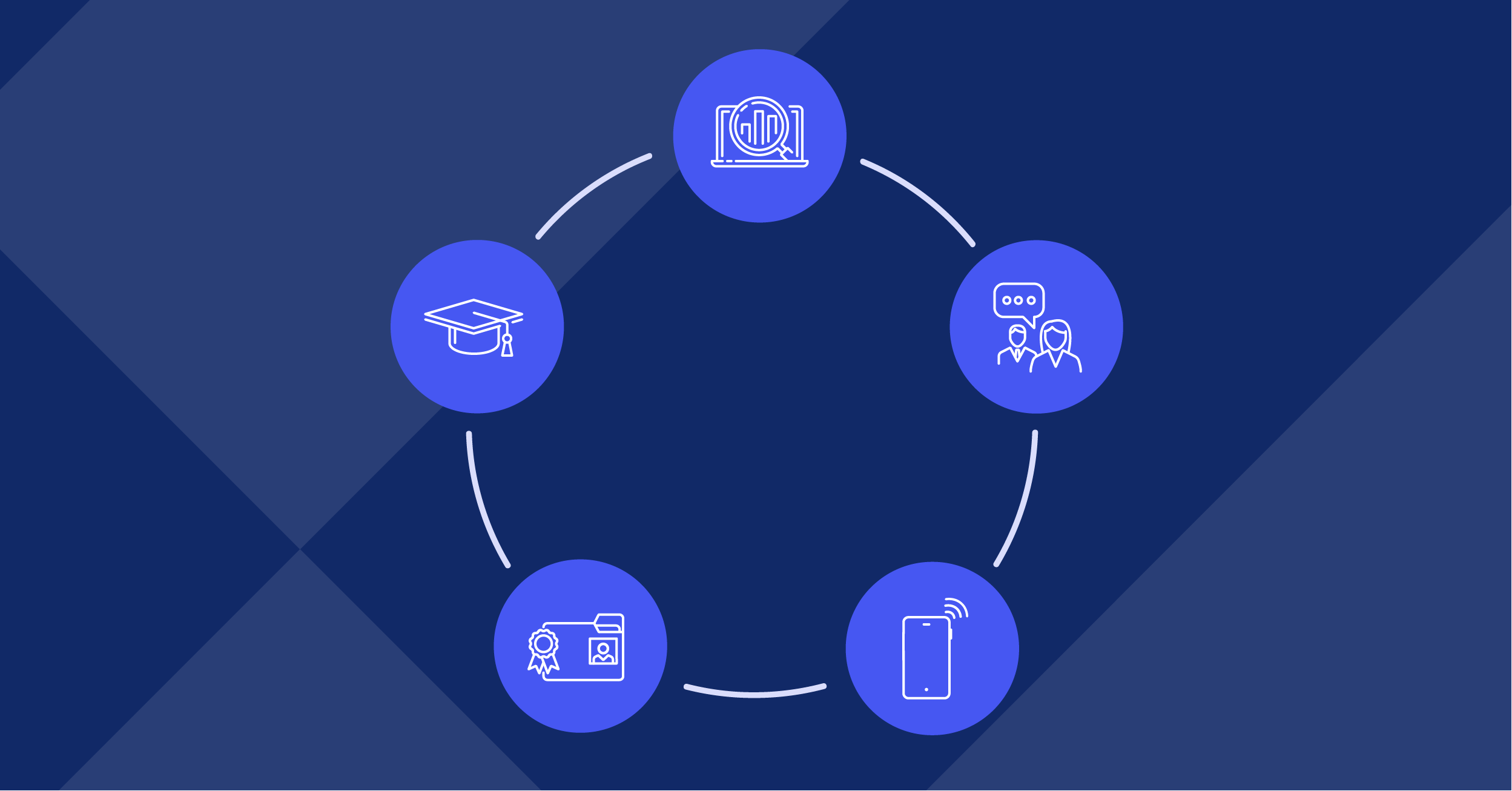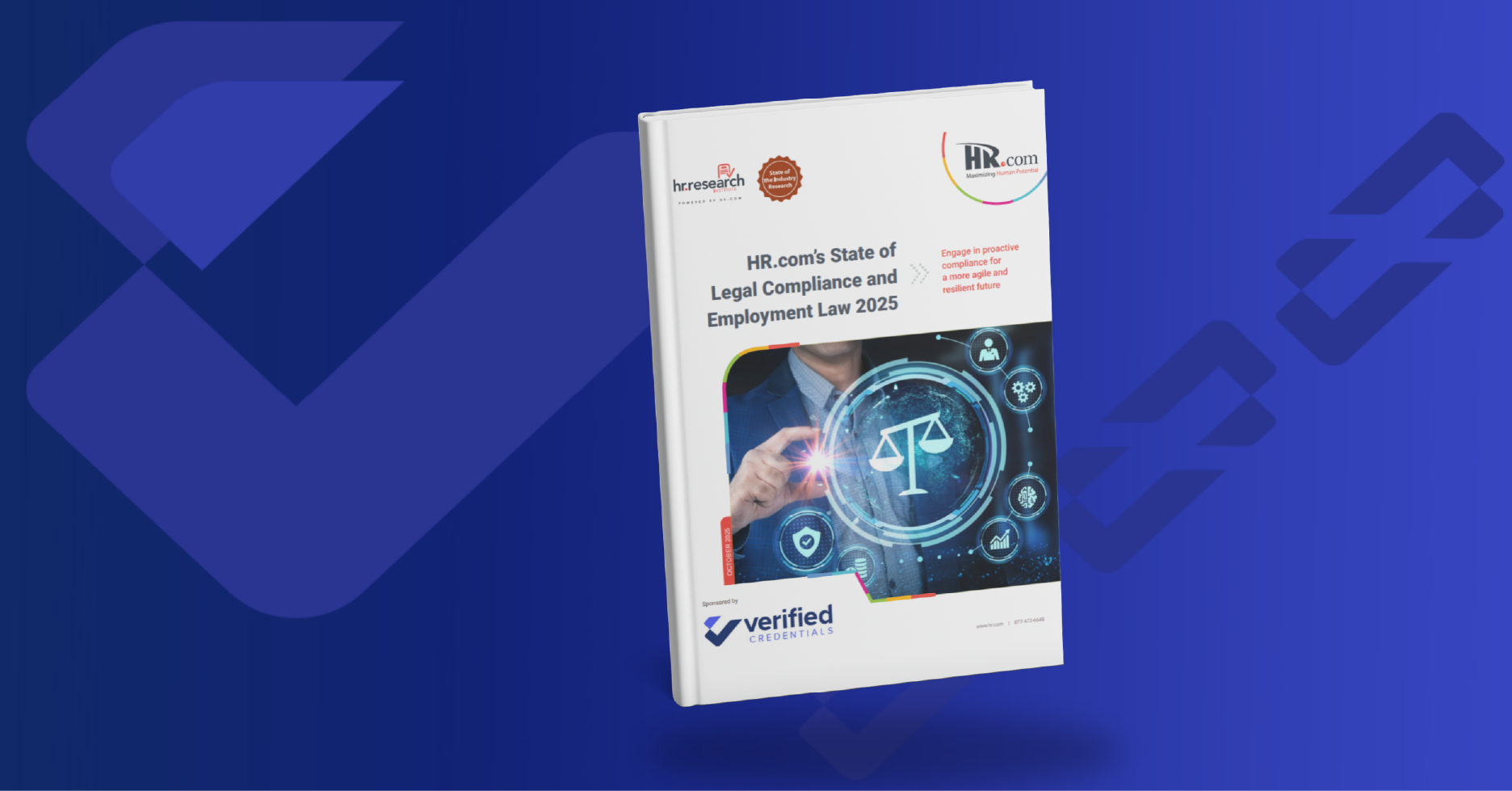A Quick Guide to Understanding the 7-Year Lookback Rule in Consumer Reporting
If you are involved in your team’s background screening and hiring process, you'reprobably familiar with the “7-year lookback rule” for criminal ...
With Verified Credentials' mobile-first candidate experience, you meet candidates where it's most convenient. Learn how easy we make it.
|
|
Now offering DOT services!Get your drivers on the road quickly and meet DOT regulations. |
Gain clarity about your compliance responsibilities with our new Adverse Action Guide! Use the interactive map to learn what regulations apply in your area.
Verified Credentials is a leading background screening company. Since 1984, we’ve helped validate and secure relationships through the use of our comprehensive screening solutions. We offer a wide variety of background checks, verifications, and innovative screening tools.

Our accreditation confirms that our policies, processes, and employee training meet rigorous industry compliance standards.
3 min read
Verified Credentials Jul 14, 2022 12:00:00 AM

A discrepancy is when two pieces of information don’t line up. Where there should be agreement, there’s confusion or ambiguity. In other words, a discrepancy happens when something isn’t quite right. The same is true for background check discrepancies. These could include situations where a piece of information from a candidate’s profile is missing, couldn’t be verified, or a record came back that requires review. Background check discrepancies are not necessarily bad, but they could indicate that something may warrant further attention.
Understanding where records come from and how they are conducted can help clarify why discrepancies occur. It can also help explain why discrepancy rates vary for different background checks. By better understanding what discrepancies represent on a background check report, HR professionals can create new process efficiencies and ensure hiring policies are fully aligned with company values.
Many employers may focus on discrepancies that come from criminal history checks. It’s understandable, given the potential risk some criminal records could represent. There’s also the fact that 70-100 million U.S. adults have a criminal record. That’s equal to roughly one in every three people.
According to our data, the average discrepancy rate for county and statewide criminal searches is about 1 out of every 20 candidates. But it varies depending on the specific search used. A higher average of county and state criminal history searches find records. Typically, federal criminal checks find potential records less frequently.
Why is there so much variation in discrepancy rates? Each type of background check uses different sources to locate records. We complete county searches at the county level. Those records are sourced directly from county courthouses or other local sources. Statewide searches often use state criminal repositories collected from the various county records.
And then there’s the national criminal database search. This is not a comprehensive look at records from all sources in the U.S. However, it does cover thousands of jurisdictions from around the country and uses a variety of sources to locate tips and leads for potential records. With such a broad reach, you might expect this to return high numbers of discrepancies. The truth is, the national criminal database search discrepancy rate remains similar compared to primary county criminal record sources.
With various options that look at different sources, many HR professionals choose to layer searches. Using multiple criminal checks could help broaden the search and cast the widest net possible. Doing so increases the potential for a reported discrepancy but may also reduce the risk of hiring someone with a dangerous past.
Certain verifications typically have the highest discrepancy rates of all background checks. Nearly 1 out of 5 of all employment, academic, and professional license verifications combined find a discrepancy. Job history checks tend to have the most discrepancies, followed by academic verifications.
For some verifications, discrepancies often indicate that the information provided by the candidate (possibly from their application or resume) did not match what was confirmed by the source. Discrepancies could include things like:
While criminal checks and employment, academic, and professional license verifications are among the most common, others can reveal potentially important records for employers. Adding searches like credit history checks, healthcare-specific searches, and driving record checks can locate records not found with other types of searches.
Nearly a third of driving record checks return discrepancies. This might include several motor vehicle-related incidents, potentially even unsafe driving behaviors, or serious driving-related offenses.
It could prove valuable for HR leaders to review their background check programs to ensure it aligns with organization goals and standards.
The word “discrepancy” can feel negative. But just because a candidate has one doesn’t necessarily mean they have a dangerous past. Nor does it mean they were trying to mislead you on purpose. There are many reasons a record might get returned and create a discrepancy on a background check report. The candidate may not remember the exact hire date of their last job. Or they may not know what their previous HR department noted as their leave date. This is why you may not see discrepancies as an automatic disqualifier for a candidate. Instead, they are an indication that there’s something that could require further attention.
More searches may increase the likelihood of finding a record or discrepant information. Employers may want to ensure they are using the searches important to the position and the organization’s wellbeing; HR professionals may also want to consider report scoring tools that can help quickly identify discrepancies. This could substantially speed up the review process.
Employers may want to establish policies that promote greater hiring process consistency in the big picture. In other words, creating policies on what to do when discrepancies occur. A clear follow-up process is important for hiring managers to ensure fair treatment of each candidate. By understanding more about discrepancies, HR leaders can optimize their background check programs to increase efficiency and reflect the true goals and values of the organization.
Rethinking your background check processes? Connect with Verified Credentials and let us help you design the ideal background check program for your organization’s unique needs.

If you are involved in your team’s background screening and hiring process, you'reprobably familiar with the “7-year lookback rule” for criminal ...

Whether your program supports nursing students or other healthcare tracks, every clinical placement requires a unique mix of verifications,...

Navigating compliance is a key concern for HR pros in any industry and keeping up with legislative changes while anticipating future developments is...
Criminal history searches have long been among the most popular types of background checks. Based on Verified Credentials’ internal research of its...

Companies love to talk about making “investments for the future.” Whether opening a new sales office or purchasing new equipment, each move is meant...
![Guide to Understanding the Sources of Sex Offender Background Checks [Infographic]](https://blog.verifiedcredentials.com/hubfs/Imported_Blog_Media/Blog_Standard%20image%20-%20pink-Oct-07-2024-05-26-50-8184-PM.png)
Sex offenses are among the most serious crimes a background check can uncover. Recently, we have heard from some HR professionals who thought they...